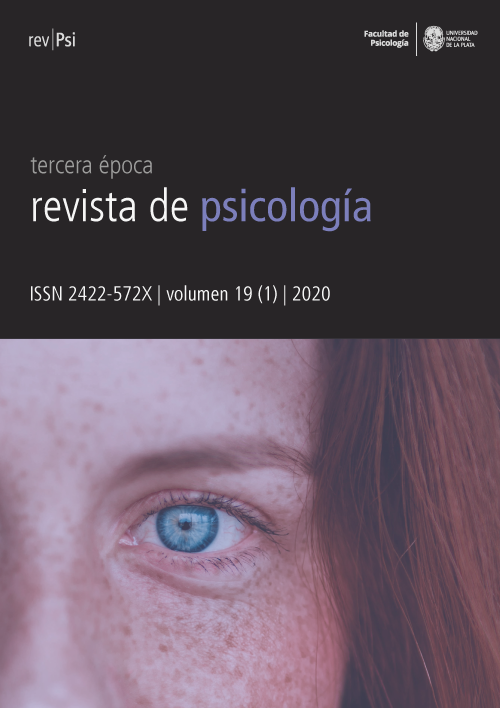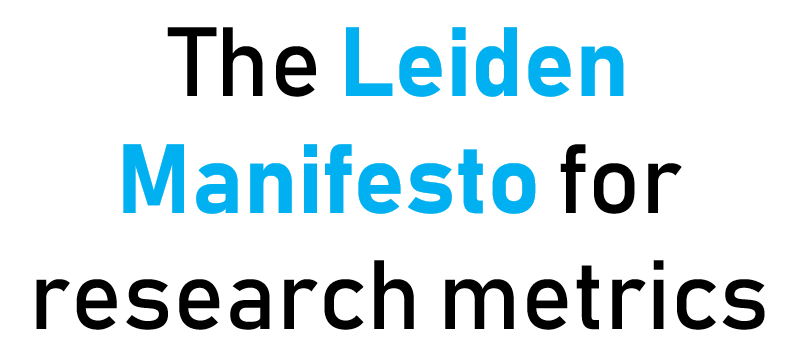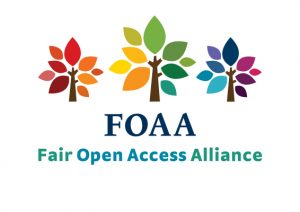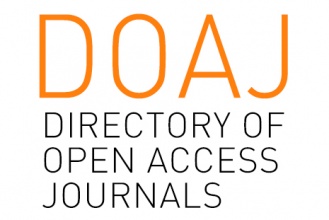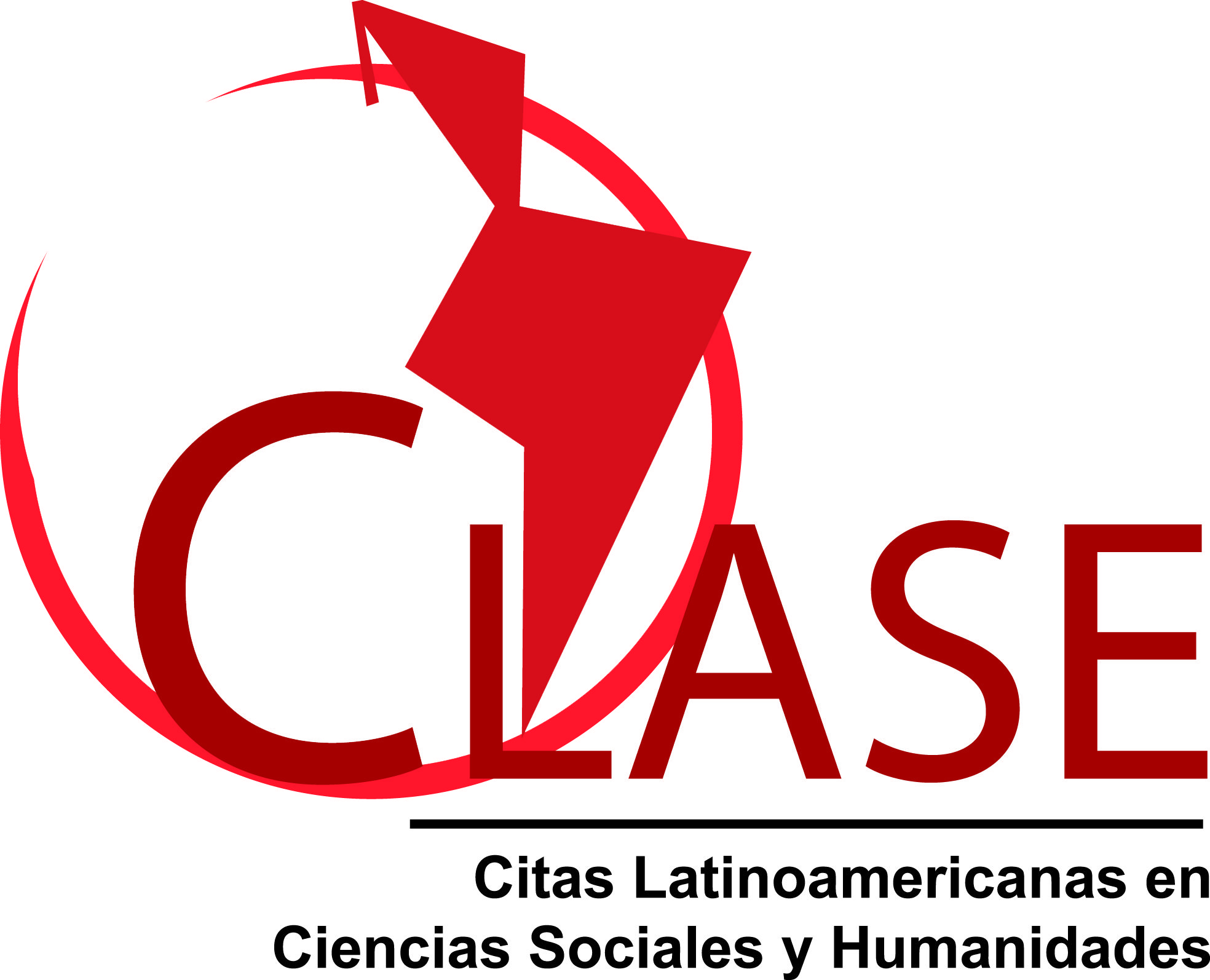Predicción de actitud hacia personas con VIH/SIDA y hacerse prueba del VIH
DOI:
https://doi.org/10.24215/2422572Xe056Palabras clave:
actitud, homosexualidad, autoritarismo, estudiantes, MéxicoResumen
Esta investigación tiene como objetivo contrastar un modelo para predecir actitud hacia personas que viven con VIH/SIDA (PVVS) y hacerse la prueba del VIH. Se aplicó la Escala de Actitud hacia PVVS, la escala de actitud hacia hombres homosexuales y lesbianas, la escala de autoritarismo de ala derecha y preguntas sobre datos sociodemográficos, clínicos, de conducta sexual y relaciones de amistad a 202 estudiantes de medicina mexicanos. Se usó un muestreo no probabilístico. Con buen ajuste a los datos, una actitud de mayor rechazo hacia PVVS fue predicha por orientación heterosexual, ser hombre y autoritarismo. La actitud hacia personas homosexuales tuvo una correlación sustantiva con actitud hacia PVVS, pero no fue un predictor. Hacerse la prueba del VIH fue predicho por ser hombre, actitud de aceptación hacia PVVS, tener amigos homosexuales y autoritarismo. Se concluye que el modelo especificado de corte psicosocial presenta gran capacidad explicativa.
Referencias
American Psychological Association. (2017). Ethical principles of psychologists and code of conduct. With the 2016 amendment to standard 3.04. Washington: APA
Asaolu, I. O., Gunn, J. K., Center, K. E. Koss, M. P., Iwelunmor, J. I. y Ehiri, J. E. (2016). Predictors of HIV testing among youth in Sub-Saharan Africa: A cross-sectional study. Plos One, 11(10), e0164052. https://doi.org/10.1371/journal.pone.0164052
Bishop, P. A. y Herron, R. L. (2015). Use and misuse of the Likert item responses and other ordinal measures. International Journal of Exercise Science, 8(3), 297-302.
Blackwell, C. W. y Kiehl, E. M. (2008). Homophobia in registered nurses: Impact on LGB youth. Journal of LGBT Youth, 5(4), 28-44. http://dx.doi.org/10.1080/19361650802222989
Boone, M. R., Stephanie H. Cook, S. H. y Wilson, P. A. (2016). Sexual identity and HIV status influence the relationship between internalized stigma and psychological distress in black gay and bisexual men. AIDS Care, 28(6), 764-770. https://doi.org/10.1080/09540121.2016.1164801
Burgess, D. J., Hardeman, R. R., Burke, S. E., Cunningham, B. A., Dovidio, J. F., Nelson, D. B., … van Ryn, M. (2019). Incoming medical students' political orientation affects outcomes related to care of marginalized groups: Results from the medical student CHANGES study. Journal of Health Politics, Policy and Law, 44(1), 113-146. https://doi.org/10.1215/03616878-7206755
Burke, S. E., Dovidio, J. F., Przedworski, J. M., Hardeman, R. R., Perry, S. P., Phelan, S. M., … van Ryn, M. (2015). Do contact and empathy mitigate bias against gay and lesbian people among heterosexual first-year medical students? A report from the medical student CHANGE study. Academic Medicine, 90(5), 645-651. https://doi.org/10.1097/ACM.0000000000000661
Byrne, B. (2016). Structural equation modelling with AMOS: Basic concepts, applications, and programming (3a ed.). New York: Routledge.
Cárdenas, M. y Parra, L. (2010). Adaptación y validación de la Versión Abreviada de la Escala de Autoritarismos de Derechas (RWA) en una muestra chilena. Revista de Psicología, 19(1), 61-79. https://doi.org/10.5354/0719-0581.2010.17098
Cui, J., Li, C., Yang, K. y Xu, W. (2018). Adaptive positive and negative runs test. Journal of Statistical Computation and Simulation, 88(7), 1314-1335. https://doi.org/10.1080/00949655.2018.1430802
Dahlui, M., Azahar, N., Bulgiba, A., Zaki, R., Oche, O. M., Adekunjo, F. O. y Chinna, K. (2015). HIV/AIDS related stigma and discrimination against PLWHA in Nigerian population. PloS One, 10(12), e0143749. https://doi.org/10.1371/journal.pone.0143749
Daniel-Ulloa, J., Ulibarri, M., Baquero, B., Sleeth, C., Harig, H. y Rhodes, S. D. (2016). Behavioral HIV prevention interventions among Latinas in the US: A systematic review of the evidence. Journal of Immigrant Minority Health, 18(6), 1498-1521. https://doi.org/10.1007/s10903-015-0283-0
De Harven, E. (2010). Human endogenous retroviruses and AIDS research: confusion, consensus, or science? Journal of American Physicians and Surgeons, 15(3), 69-74.
Duesberg, P. H., Mandrioli, D., McCormack, A., Nicholson, J. M., Rasnick, D., Fiala, C., Koehnlein, C., Bauer, H. H. y Ruggiero, M. (2011). AIDS since 1984: No evidence for a new, viral epidemic - not even in Africa. Italian Journal of Anatomy and Embryology, 116(2), 73-92.
Efron, B. y Hastie, T. (2016). Computer age statistics inference: algorithms, evidence and data science. New York: Cambridge University Press.
Emlet, C. A., Brennan, D. J., Brennenstuhl, S., Rueda, S., Hart, T. A. y Rourke, S. B. (2015). The impact of HIV-related stigma on older and younger adults living with HIV disease: does age matter? AIDS Care, 27(4), 520-528. https://doi.org/10.1080/09540121.2014.978734
Espinoza, S. C. y Novoa-Muñoz, F. (2018). Advantages of ordinal alpha versus Cronbach's alpha, illustrated using the WHO AUDIT test. Pan American Journal of Public Health, 42, e65. https://doi.org/10.26633/RPSP.2018.65
Farhat, D., Greene, E., Paige, M. Q., Koblin, B. A. y Frye, V. (2017). Knowledge, stereotyped beliefs and attitudes around HIV chemoprophylaxis in two high HIV prevalence neighborhoods in New York City. AIDS and Behavior, 21(5), 1247-1255. https://doi.org/10.1007/s10461-016-1426-6
Geter, A., Herron, A. R. y Sutton, M. Y. (2018). HIV-related stigma by healthcare providers in the United States: A systematic review. AIDS Patient Care and STDs, 32(10), 418-424. https://doi.org/10.1089/apc.2018.0114
Goodson, P. (2014). Questioning the HIV-AIDS hypothesis: 30 years of dissent. Frontiers in Public Health, 2, 154. https://doi.org/10.3389/fpubh.2014.00154
Herek, G. M. (1984). Attitudes toward lesbians and gay men: A factor analytic study. Journal of Homosexuality, 10(1-2), 39-51. https://doi.org/10.1300/J082v10n01_03
Herek, G. M. (1994). Assessing heterosexuals' attitudes toward lesbians and gay men: A review of empirical research with the ATLG scale. En B. Greene y G. M. Herek, (Eds.), Lesbian and gay psychology: Theory, research, and clinical applications (p. 206-228). Thousand Oaks: Sage Publications.
Herek, G. M. (1996). Why tell if you're not asked? Self-disclosure, intergroup contact, and heterosexuals' attitudes toward lesbians and gay men. En G. M. Herek, J. B. Jobe y R. M. Carney (Eds.), Worlds of desire. Out in force: Sexual orientation and the military (pp. 197-225). Chicago: University of Chicago Press.
Herek, G. M. (2009). Sexual stigma and sexual prejudice in the United States: A conceptual framework. En D. A. Hope (Ed.), Contemporary perspectives on lesbian, gay, and bisexual identities (pp. 65-111). New York: Springer.
Hodson, G., Turner, R. N. y Choma, B. L. (2016). Individual differences in intergroup contact propensity and prejudice reduction. En L. Vezzali y S. Stathi (Eds.), Intergroup contact theory: Recent developments and future directions (pp. 8-31). London: Routledge.
Huerga, H., Van Cutsem, G., Ben Farhat, J., Reid, M., Bouhenia, M., Maman, D., … Ellman, T. (2016). Who needs to be targeted for HIV testing and treatment in KwaZulu-Natal? Results from a population-based survey. Journal of Acquired Immune Deficiency Syndromes, 73(4), 411-418. https://doi.org/10.1097/QAI.0000000000001081
Jin, F., Prestage, G., Law, M., Kippax, S., Van de Ven, P., Rawsthorne, P., … Grulich, A. (2002). Predictors of recent HIV testing in homosexual men in Australia. HIV Medicine, 3(1), 271-276. https://doi.org/10.1046/j.1468-1293.2002.00121.x
Jöreskog, K. G., Olsson, U. H. y Wallentin, F. Y. (2016). Multivariate analysis with LISREL. Cham: Springer.
Kalichman, S. C. (2015). Commentary on “questioning the HIV-AIDS hypothesis: 30 years of dissent”. Frontiers in Public Health, 3, 1-2, 30. https://doi.org/10.3389/fpubh.2015.00030
Kikwasi, G. J., Lukwale, S. R. y Mwageni, E. A. (2017). A study of first year students’ attitude towards HIV and AIDS. Global Journal of Health Science, 9(7), 117-126. https://doi.org/10.5539/gjhs.v9n7p117
Knaak, S y Patten, S. A (2016). Grounded theory model for reducing stigma in health professionals in Canada. Acta Psychiatrica Scandinavica, 134(Suppl. 446), 53-62. https://doi.org/10.1111/acps.12612
Kyriazos, T. A. (2018). Applied psychometrics: sample size and sample power considerations in factor analysis (EFA, CFA) and SEM in general. Psychology, 9(8), 2207-2230. https://doi.org/10.4236/psych.2018.98126
Masoudnia, E. (2015). Public perceptions about HIV/AIDS and discriminatory attitudes toward people living with acquired immunodeficiency syndrome in Iran. Journal of Social Aspects of HIV/AIDS, 12(1), 116-122. https://doi.org/10.1080/17290376.2015.1123644
Moral, J. (2019). Revisión de los criterios para validez convergente estimada a través de la varianza media extraída. Psychologia, 13(2), 25-41.
Moral, J. y Valle, A. (2011a). Escala de Actitudes hacia Lesbianas y Hombres Homosexuales (ATLG) 2. Distribución y evidencias de validez. Revista Electrónica Nova Scientia, 4(7), 153-171. https://doi.org/10.21640/ns.v4i7.180
Moral, J. y Valle, A. (2011b). Escala de Actitudes hacia Lesbianas y Hombres Homosexuales en México 1. Estructura factorial y consistencia interna. Revista Electrónica Nova Scientia, 3(6), 139-157. https://doi.org/10.21640/ns.v3i6.191
Moral, J. y Valle, A. (2013). Contraste de una estructura trifactorial para escala de actitud hacia lesbianas y hombres homosexuales (ATLG). PSICUMEX, 3(2), 33-51.
Moral, J. y Valle, A. (2019). Concurrent validity of the internalized homonegativity scale in its versions composed of 14 and 16 items. En C. H. García (Ed.), Researches in Hispanic Psychology (Vol., 2, pp. 97-146). Hauppauge: Nova Science.
Moral, J. y Valle, A. (en prensa). Propiedades psicométricas de la Escala de Actitud hacia Personas que Viven con VIH/SIDA. Perspectivas Sociales, 21(2).
Mukherjee, S., McKinney, S. y Darrow, W. (2018). Stigma towards homosexuality and AIDS among students of a large Hispanic-serving university. Sexuality & Culture, 22(4), 1137-1153. https://doi.org/10.1007/s12119-018-9516-4
Neumann, R., Hülsenbeck, K. y Seibt, B. (2004). Attitudes towards people with AIDS and avoidance behavior: Automatic and reflective bases of behavior. Journal of Experimental Social Psychology, 40(4), 543-550. https://doi.org/10.1016/j.jesp.2003.10.006
Papadopulos, E., Turner, V. F., Page, B. A., Papadimitriou, J. y Causer, D. (2006). No proof HIV antibodies are caused by a retroviral infection. Emergency Medicine Australas, 18(3), 308-309. https://doi.org/10.1111/j.1742-6723.2006.00859.x
Prati, G., Zani, B., Pietrantoni, L., Scudiero, D., Perone, P., Cosmaro, L., … Oldrini, M. (2016). The role of knowing someone living with HIV/AIDS and HIV disclosure in the HIV stigma framework: a Bayesian mediation analysis. Quality & Quantity, 50(2), 637-651. https://doi.org/10.1007/s11135-015-0168-2
Rangel, Y. Y. (2015). Narrativas del riesgo respecto del VIH/sida en México. De letal a crónica y del estigma a los derechos humanos. Revista de El Colegio de San Luis, 5(9), 200-219. https://doi.org/10.21696/rcsl592015612
Reyes, M., Varas, N. y Martínez, M. T. (2015). Religion and HIV/AIDS stigma: Considerations for the nursing profession. The New School Psychology Bulletin, 12(1), 48-55.
Rickles, N. M., Furtek, K. J., Malladi, R., Ng, E. y Zhou, M. (2016). Pharmacy student attitudes and willingness to engage in care with people living with HIV/AIDS. American Journal of Pharmaceutical Education, 80(3), artículo 45. https://doi.org/10.5688/ajpe80345
Suominen, T., Laakkonen, L., Lioznov, D., Polukova, M., Nikolaenko, S., Lipiäinen, L., … Kylmä, J. (2015). Russian nursing students’ knowledge level and attitudes in the context of human immunodeficiency virus (HIV) – a descriptive study. BMC Nursing, 14(1), 1-12. https://doi.org/10.1186/s12912-014-0053-7
Tang, W., Zhuang, X., Zhao, H., Pang, C., He, Y., Liu, F., … He, D. (2016). HIV/AIDs-related stigma among medical students in Beijing, China. International Journal of Clinical and Experimental Medicine, 9(5), 8743-8748.
Ungaretti, J., Müller, M. y Etchezahar, E. (2016). El estudio psicológico del prejuicio: Aportes del autoritarismo y la dominancia social. Revista Internacional de Investigación en Ciencias Sociales, 12(1), 75-86. https://doi.org/10.18004/riics.2016.julio.75-86
Vaughn, A. A, Teeters, S. A., Sadler, M. S. y Cronan, S. B. (2017). Stereotypes, emotions, and behaviors toward lesbians, gay men, bisexual women, and bisexual men. Journal of Homosexuality, 64(13), 1890-1911. https://doi.org/10.1080/00918369.2016.1273718
Weiser, S. D., Heisler, M., Leiter, K., Percy-de Korte, F., Tlou, S., DeMonner, S., ... Bangsberg, D. R. (2006). Correction: Routine HIV testing in Botswana: A population-based study on attitudes, practices, and human rights concerns. PLOS Medicine, 3(10), e395. https://doi.org/10.1371/journal.pmed.0030395
Wesolowski, L., Chavez, P., Sullivan, P., Freeman, A, Sharma, A., Mustanski, B., … MacGowan, R. (2019). Distribution of HIV self-tests by HIV-positive men who have sex with men to social and sexual contacts. AIDS and Behavior, 23(4), 893-899. https://doi.org/10.1007/s10461-018-2277-0
Descargas
Publicado
Número
Sección
Licencia
![]()
Los autores/as que publiquen en esta revista aceptan las siguientes condiciones:
- Los autores/as conservan los derechos de autor y ceden a la revista el derecho de la primera publicación, con el trabajo registrado con la licencia de atribución de Creative Commons, que permite a terceros utilizar lo publicado siempre que mencionen la autoría del trabajo y a la primera publicación en esta revista.
- Los autores/as pueden realizar otros acuerdos contractuales independientes y adicionales para la distribución no exclusiva de la versión del artículo publicado en esta revista (p. ej., incluirlo en un repositorio institucional o publicarlo en un libro) siempre que indiquen claramente que el trabajo se publicó por primera vez en esta revista.
- Se permite y recomienda a los autores/as a publicar su trabajo en Internet (por ejemplo en páginas institucionales o personales) antes y durante el proceso de revisión y publicación, ya que puede conducir a intercambios productivos y a una mayor y más rápida difusión del trabajo publicado (veaThe Effect of Open Access).

